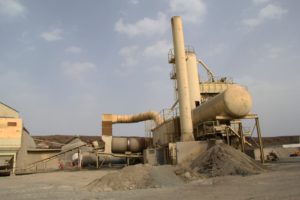 This post by Mark Neasbey, a Director of the Australian Centre for Value Management, is the third in a series of posts on the role of the capital budget in infrastructure decision making. In this post Mark examines the issues facing a mine expansion.
This post by Mark Neasbey, a Director of the Australian Centre for Value Management, is the third in a series of posts on the role of the capital budget in infrastructure decision making. In this post Mark examines the issues facing a mine expansion.
The mining operation planned to do two things – one, expand its processing facilities to deliver increased product volumes to exacting customer specifications and two, change from road to rail transport for the whole journey to the port. An important third aspect of importance was getting the timing to market right to optimise prices and revenue.
A design for the processing facility had been prepared as well as a proposed rail alignment and rolling stock and operating schedule, which enabled a direct loading from the processing plant to train wagons. Existing operations relied on road transport to a rail transfer point some 40kms from the mine plant. This needed a large workforce and truck fleet and associated scheduling activities to meet shipping schedules at the port.
In this instance the key decisions that the company executives had to make were how much disruption to supply its customers could tolerate during the weeks needed to expand the plant and what would be the reliability of the delivery program to meet the market opportunity. Their value management study helped them to assess the options to refine both the plant design and the proposed rail arrangements in a way that minimised disruptions to the existing plant operations – so product could still flow to customers and continue to generate cash flow for the business. This was possible with a relatively minor increase in use of capital funds in the works at the plant with the rail works staging able to occur in parallel.
Whilst ongoing operating costs were reduced and volumes (and price yield) increased there were some additional asset implications. A significant reduction in the workforce enabled a portion of the accommodation, recreation etc. facilities to be redeployed to another operation and otherwise disposed of, reducing ongoing site maintenance cost.
Concluding Comments A budget for asset projects is expected to change during the life of the project – but why it changes and whether that is up or down is something that must be actively managed. It should not be blindly adhered to, let alone ignored. An asset project affects operating (recurrent) costs and potential revenue as well as capital, which are also important considerations for the decision-makers.
Question for today: What ‘take-away’ do you take away from this?

Recent Comments